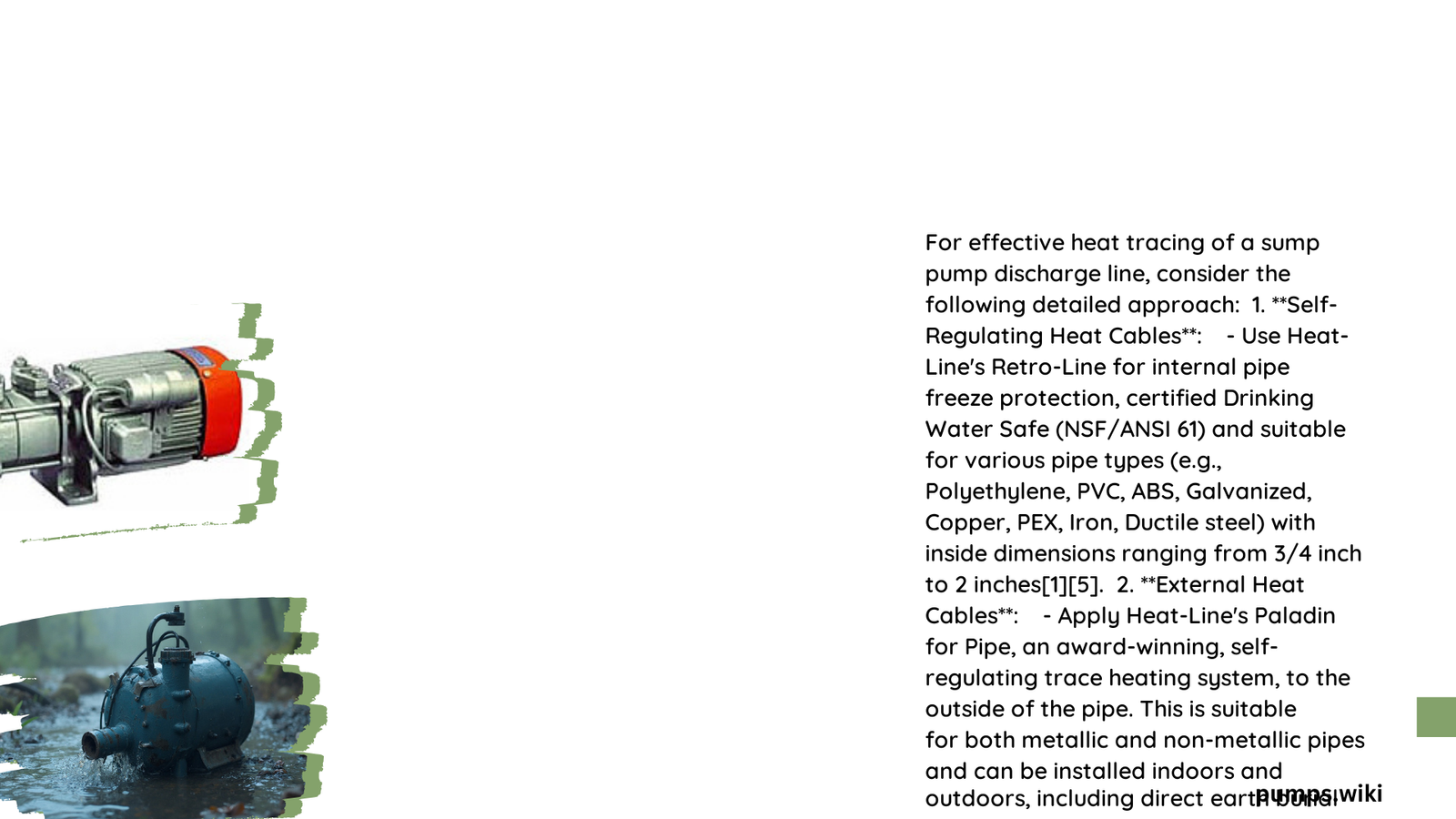Heat trace for sump pump discharge represents a critical solution for homeowners battling freezing temperatures and potential drainage blockages. By implementing specialized heating cables along discharge lines, property owners can prevent ice formation, ensure continuous water flow, and protect their basement drainage systems from costly winter-related damages. This comprehensive guide explores advanced techniques, installation methods, and strategic approaches to maintaining reliable sump pump performance in challenging environmental conditions.
What Makes Heat Trace Essential for Sump Pump Discharge?
Heat trace technology provides a proactive defense against frozen discharge lines, which can compromise entire drainage systems. When temperatures drop, standard sump pump discharge pipes become vulnerable to ice accumulation, potentially causing:
- Backup of water into basement areas
- Complete system failure
- Potential structural water damage
- Expensive repair costs
Key Performance Characteristics of Heat Trace Systems
| Feature | Performance Metric | Typical Range |
|---|---|---|
| Temperature Range | Operational Capacity | -40°F to 150°F |
| Power Consumption | Watts per Linear Foot | 3-5 watts |
| Cable Durability | Expected Lifespan | 10-15 years |
| Installation Complexity | Skill Level Required | Moderate |
How Do Self-Regulating Heat Cables Work?

Self-regulating heat cables represent the most advanced solution for sump pump discharge protection. These intelligent systems automatically adjust heat output based on surrounding temperature, providing:
- Dynamic Temperature Control
- Increases heat when temperatures drop
- Reduces energy consumption during milder conditions
-
Prevents overheating and potential cable damage
-
Flexible Installation Options
- Internal pipe installation
- External pipe wrapping
- Adaptable to various pipe materials
What Factors Influence Heat Trace Effectiveness?
Several critical elements determine the success of a heat trace system:
- Pipe Material Compatibility
- Metallic pipes: Excellent heat conductivity
- PVC pipes: Require specialized installation techniques
-
Composite materials: Varied thermal response characteristics
-
Environmental Considerations
- Local climate severity
- Average winter temperatures
- Wind chill factors
- Ground frost depth
What Are Installation Best Practices?
Successful heat trace implementation requires meticulous planning and execution:
Recommended Installation Steps
- Conduct thorough site assessment
- Select appropriate heat cable type
- Measure precise discharge line length
- Verify electrical compatibility
- Install thermal insulation
- Test system functionality
- Schedule periodic maintenance checks
How Much Does Heat Trace Installation Cost?
Cost considerations vary based on multiple factors:
- Material Expenses
- Heat cable: $3-$6 per linear foot
- Thermostat: $50-$150
-
Electrical components: $75-$200
-
Labor Costs
- Professional installation: $200-$500
- DIY potential: Minimal additional expenses
What Maintenance Strategies Ensure Longevity?
Proactive maintenance prevents potential system failures:
- Annual visual cable inspections
- Testing electrical connections
- Checking insulation integrity
- Verifying thermostat functionality
Conclusion
Heat trace for sump pump discharge represents a sophisticated solution for protecting residential drainage systems against freezing conditions. By understanding installation techniques, performance characteristics, and maintenance requirements, homeowners can implement robust protection strategies.
